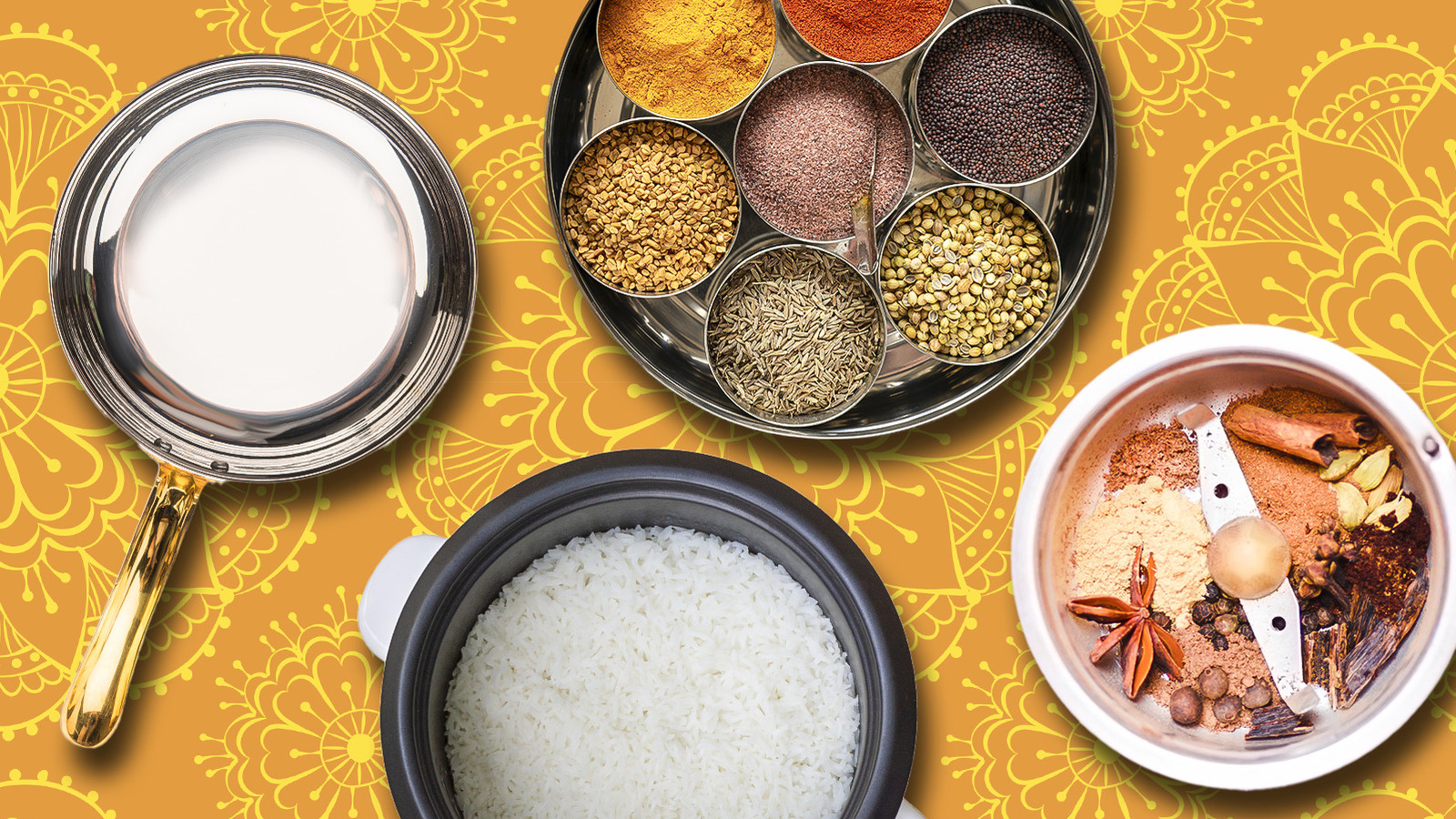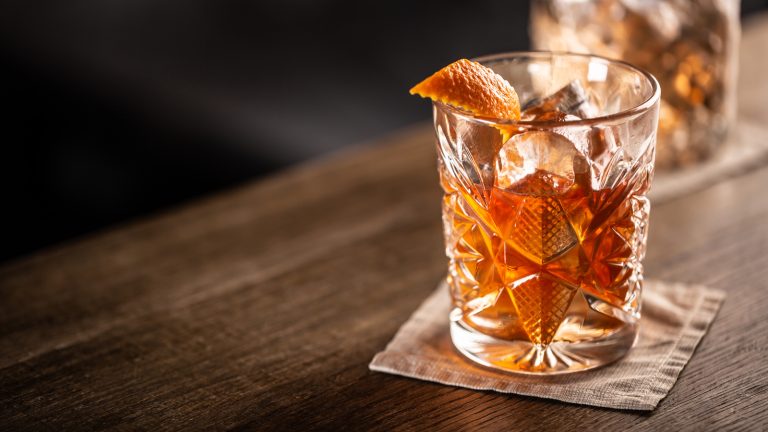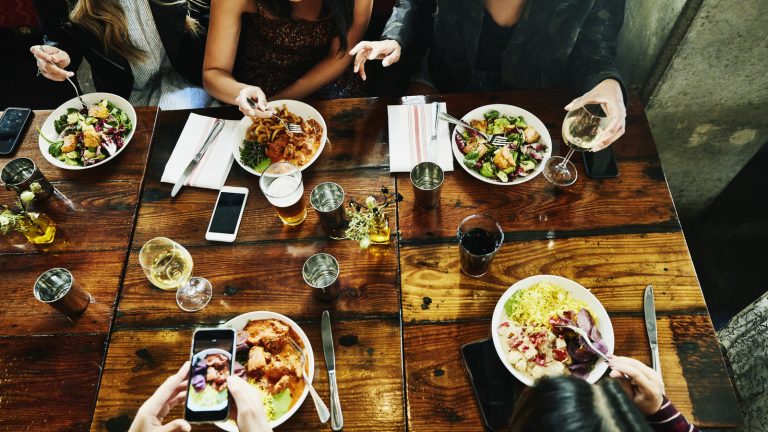We may receive a commission on purchases made from links.
Indian cuisine is often shrouded in mystique while being unnecessarily intimidating to those of us who want to try to replicate our favorite restaurant’s dal makhani or aloo gobi. With a basic knowledge of ingredients and a few practical tips, however, anyone can cook a great Indian meal. Of course, it helps to have the right equipment, too.
As an American who married an Indian citizen, moved to Mumbai, and has slowly built up a repertoire of reliable Indian recipes, my first piece of advice to anyone diving into a new cuisine is to have the correct equipment on hand. To be sure, I regretted not having a spice grinder when I spent many frustrated hours bent over a mortar and pestle; and while many Indians will tell you that masalas taste better when ground in stone, that’s a debate for another day. To help ease your transition into Indian cooking, I have curated this guide that includes some of my favorite, most frequently used kitchen tools. By no means is this an exhaustive list, but it should be useful in stocking your kitchen with appliances that will save you both time and grunt work. You may even find yourself using these tools when cooking from other cuisines as well.
1. Idli stand
A South Indian staple, idlis are steamed rice cakes usually served alongside a spicy, tangy broth known as sambar and a variety of dips known as chutneys. Idlis can also be coated in tempering (a concoction of oil and spices), drenched in ghee, and soaked in yogurt. Before any of that, though, idlis must be prepared by fermenting a batter of rice and husked black gram. In India, idli batter is readily accessible for those who do not feel comfortable or do not have time to prepare it at home.
To cook idli, you need a large pot (I use an Instant Pot) and a special steaming apparatus called an idli stand. The diameter of a single idli can range from the palm of your hand to the length of your thumb, depending on the type of stand you use. Once the batter is ready, you simply need to oil each concavity and then pour in the batter. Small idlis should be steamed for about 8 minutes, while large idlis can require up to 15 minutes. You will know your idlis are ready when a toothpick inserted into the middle of one comes out clean. Let the idlis cool for a few minutes before using a spoon to scoop them out of the stand.
2. Tawa
Tawas (also spelled tavas) are thin pans used to cook staple foods like rotis, parathas, and dosas. Tawas are made from materials like stainless steel, cast iron, and aluminum, and they come in a variety of shapes and sizes. For instance, some are flat and surrounded by a lip, while others are slightly concave. Because dosas can be thought of as savory, Indian-style crepes, it comes as no surprise that tawas work beautifully when preparing French crepes as well. You might even use one to cook a batch of pancakes.
I find that tawas work best over gas stoves, especially tawas that are slightly concave in shape; that’s because gas stoves’ grates are able to perfectly cradle such tawas, allowing heat to be distributed evenly. Furthermore, with an electric stove, you won’t have a flame as readily accessible to char your rotis and parathas. However, this might just be the perfect excuse to buy that kitchen torch you have been eyeing for years. If you have an electric stove, don’t be discouraged; you can certainly use such pans over electric stoves as well, as I do when I am in the United States.
3. Pressure cooker
I use a pressure cooker nearly every day in India. From preparing a versatile tikka masala sauce to cooking potatoes for aloo paratha, pressure cookers can save a considerable amount of time and pot-watching. I use mine most often for cooking rice and dals, including one pot recipes like this Instant Pot rajma.
The most common kind of pressure cooker is a stainless steel apparatus with a whistle on top; you can tell when your dish is ready based on how many times the whistle blows. Some time ago, though, I invested in an Instant Pot to reduce my reliance on the gas stove and ensure more predictable results. There were a few reasons for this decision, including the fact that gas stoves are known to generate unhealthy fumes and the unfortunate truth that here in India, we occasionally experience cuts in our gas supply. An Instant Pot turns out to be a convenient electric pressure cooker that allows you to step away from the kitchen, thanks to its automatic timers and pressure sensors. As a final note, while you can absolutely use a pressure cooker to prepare rice (as is the norm in India), a rice cooker is nifty to have on hand for when your pressure cooker is occupied with another dish.
4. Tadka pan
At first glance, one might assume that a tadka pan is some kind of soup ladle. I wouldn’t blame you for using it as one, either (I certainly use it to scoop up sauces and soups all the time). However, the correct use for a tadka pan is to cook oil and spices in it directly over the stove. While you could prepare your temperings (also known as tadkas) in a kadai or regular pan, tadka pans are easier to wash and don’t take up much space.
A tempering is an aromatic and flavorful mixture of spices cooked in oil, butter, or ghee. A tadka spoon is designed to completely envelop spices in your chosen fat source because when spices are cooked in some kind of fat, their flavors truly start to pop. Temperings are typically added at the end of recipes for dishes such as dal, sambar, and chutney; that’s because incorporating ingredients like mustard seeds, cumin seeds, garlic, hing, and curry leaves towards the end of a dish ensures more pungency. Don’t just throw all your tempering ingredients into a tadka spoon at once, though. There is a specific order you should follow: Start by heating the fat source, then (one at a time) add whole spices, freshly chopped ingredients like garlic and ginger, ground spices, and, finally, fresh herbs.
5. Masala dabba
If you get tired of perpetually finding duplicates in your spice cabinet or having to search in its back recesses for something as simple as black pepper, you need a masala dabba — even if it’s not for cooking Indian food. A masala dabba is a spice container, usually circular and made of brass or steel, that is traditionally used to store a cook’s most frequently used spices. The most common style of dabba contains the cutest spoon imaginable and seven small bowls for spices like turmeric, ground coriander, cumin seeds, and garam masala. That said, many models feature 12 compartments.
At the end of the day, it’s your kitchen and you can include whatever you want in your dabba. You might even want to have a second dabba on hand with spices used less often; for instance, those used for Maharashtrian cuisine can be kept in one dabba and those used for Bengali cuisine can be kept in another. Just keep salt in a separate container so that it does not corrode your dabba’s metal. The dabba should be stored within an arm’s reach of the stove and kept airtight at all times when not in use.
6. Spice grinder
If you want to work with the freshest flavors possible, a spice grinder, which a coffee grinder can also moonlight as, will be an essential component of your Indian kitchen. It’s true that you can purchase pre-mixed masalas at the grocery store, but they are often imported and of an ambiguous age. It’s better to blend your own spices at home so that you can limit the time the aromatics have to dissipate. Making your own blends also means that you can control the ingredient ratios; for example, I use less pepper in my masalas because I prefer less heat.
It’s not a happy feeling to be cooking a complex Indian meal only to realize that you need to stop halfway through, wash and dry your hands, and pull out the spice grinder. So, before you dive headfirst into a recipe, ensure that you have all your masalas laid out and ready to go. Compared to using a mortar and pestle, batch prepping large amounts of masala is a breeze in a spice grinder. To get started, check out these 10 Indian spice blends you will need the most.
7. Belan and chakla
If you already have a rolling pin, then great. Keep it accessible because you’ll want to use it for making dough-based flatbreads like rotis and parathas. You will also find it handy for fusion dishes such as samosa pot pie. If you don’t yet have a rolling pin, though, this can be a good opportunity to purchase a belan, which is slightly different. Belans are unique in that they are somewhat lighter than other rolling pins and a bit thinner, too. They are typically made of wood varieties like teak or sheesham.
Belans are usually used in conjunction with chaklas, or elevated, circular surfaces where dough can be cleanly rolled. The latter tool is not strictly necessary, but frequently used in India, where it is customary to roll out flatbreads from a comfortable seated position on the floor. Chaklas can also be constructed from wood, but are frequently made from marble.
8. Mortar and pestle
While we certainly still recommend investing in a spice grinder, a mortar and pestle can be a marvelous tool to have on hand when you need to grind
smaller amounts of spices in a jiffy. For example, I occasionally make a pickle spiced potato and broccoli dish that requires spices like nigella seeds and fenugreek seeds to first be toasted, then ground. It is such a tiny amount of spices — not even filling the palm of my hand — that I don’t need to keep a bottle of the masala on hand. Nor do I cook this dish frequently enough to warrant keeping it in stock.
You have many options when it comes to what kind of mortar and pestle to keep in your cabinet. We use a large, rough stone mortar because its texture and weight are ideal for heavy duty grinding. However, you can also find options in ceramic, marble, wood, and even glass. Of course, you might find yourself using your mortar and pestle when cooking other kinds of dishes, such as those from Mexican, Japanese, and Native American cuisines.
9. Kadhai
A kadhai, also known as a karahi, is a large, concave pan with a flat bottom. Typically made of materials like stainless steel or cast iron, we use kadhais for many purposes. From simmering curries to sautéeing bhurjis, these pans can be used for both wet and dry dishes. They are excellent to have on hand for all types of cuisines and are frequently used to stir fry vegetables and aromatics (including the onions, garlic, and ginger that kick off many recipes). Kadhais are quite deep, and so they are perfectly suited for deep-frying Indian snacks like samosas, pakoras, and chaklis. You can also use a kadhai to fry fish.
I find that our stainless steel kadhai conducts heat extremely quickly, so make sure to use a sufficient amount of oil to prevent burning. Additionally, I suggest preparing your wet ingredients, such as tomatoes and water, ahead of time so that you can add them to the pan without delay.
10. South Indian coffee filter and dabra set
If you are not a fan of coffee, South Indian filter coffee might lead you to change your mind. Its distinctly smooth taste and generous milk composition make it go down a bit easier than some of the bitter American blends to which you might be accustomed. There is a specific brewing method that makes South Indian filter coffee unique, and you should learn it in order to make the most of your new filter and dabra set.
Along with milk and either sugar or jaggery, you will need coffee powder (which is not the same as instant coffee) to make this famous beverage. Sometimes such coffee powders contain a little chicory for a sweet twist. Then comes the filter itself. Usually made from brass or steel, a South Indian coffee filter differs slightly from other filters like the French press in both form and operation; in fact, it can take up to 15-20 minutes to percolate your coffee. Once brewed, the coffee is poured into a brass dabra set. By pouring the beverage from one cup into the other, then repeating several times, a slightly foamy texture can be achieved.
11. Fine mesh strainers
No, your pasta colander won’t do the trick here. What you really need is a fine mesh strainer, and ideally, it will have a flat base that allows you to set it down in the sink as you work. The Juvale fine mesh strainer is the perfect example. You can use it for rinsing fresh produce, washing rice and lentils, straining gravies, and sifting flour to make the softest, most delicious rotis possible. You can even use such a product to strain around two servings of pasta, meaning you can potentially get rid of your other colander.
In addition to a large round strainer, I find that our small, conical strainer is absolutely essential in our kitchen when preparing chai. Such a strainer fits right over the mug for a mess-free pour. Try it for yourself with a product like the Zulay Kitchen stainless steel fine mesh strainer.
12. Sancha machine
A sancha machine may look and sound quite fancy, but it is actually quite affordable and simple to use. You will need one if you want to try your hand at homemade snacks like sev, chakli, and gathiya, perhaps in honor of Diwali. Sancha machines are also used to make idiyappam, a South Indian specialty that is reminiscent of a cake of noodles. Similar to a pasta machine, a sancha machine can process dough into a multitude of shapes by grating it through discs with holes in various formations. Usually, this dough will then be fried to a crispy, golden perfection and served alongside a cup of chai.
You can purchase an automatic, semi-automatic, or manual sancha machine, depending on your budget and the amount of time you want to invest in cooking. It’s worth noting that the manual style, which features a handle for turning, is not difficult to use at all. Sancha machines are often made with stainless steel, but they can also consist of brass.
13. Tandoor
In light of the tandoor’s hefty price tag, I would not go so far as to say it is an absolute kitchen essential. However, if your favorite Indian dishes include smoky meats, kebabs, and succulent, roasted paneer, then it might be a worthwhile investment. A tandoor is essentially a clay oven in the shape of an urn that cooks food using charcoal-fueled fire. Impressively, tandoors originated up to 5,000 years ago, and while they are traditionally buried in the ground, restaurants and home cooks can work with modern varieties suitable for indoor use.
In addition to roasting meats, vegetables, paneer, and tofu, tandoors are frequently used to prepare a variety of flatbreads. As the name implies, tandoori rotis are baked in this style of oven, granting them a smokier flavor than rotis cooked over the stove. Additionally, flatbreads like kulcha, naan, sheermal, and taftoon are traditionally prepared in tandoors.
14. Jhara
Snack time in India is a serious, and often indulgent, affair. While folks do enjoy munching on lighter options like fresh fruits, makhana, and upma, it is not uncommon for Indians to go all in for fried foods like samosas, pakoras, onion bhaji, and aloo chaat. It is not up for debate that such savory snacks are best consumed alongside a cup of tea, and indeed, many people will tell you that hot pakoras and chai must be had together at least once while watching the monsoons drench the outside world in rain.
If you want to fry these snacks yourself — as well as other foods like jalebi, okra, and poori — you will need a jhara in your kitchen cabinet. This special type of strainer is typically made of stainless steel, features a long handle for safety, and includes wide openings that allow excess oil to drip back down into the pan as you extract your fried food. You can even use a jhara for skimming liquids; for instance, if you need to separate cream from milk.
15. Appam pan
Outside of South India and Sri Lanka, appams may not be quite as common as idlis or dosas, but that doesn’t mean they aren’t equally delicious. In fact, many people prefer to dig into kormas and curries with pillowy soft appams instead of rice. Made from a fermented rice and coconut batter, appams are sweet, yet tangy, and they feature a fluffy center surrounded by delightfully crisp edges. However, you won’t be able to attain this textural gradient if you use a kadai instead of an appam pan to cook your batter.
An appam pan is shallow, concave, and features a lid to enable steaming. These pans are typically made of cast iron, a material that helps contribute to the wonderful flavor of appams. Importantly, appam pans are not to be confused with appe pans, though they are occasionally branded as the same tool. The latter pan houses up to a dozen or so small concavities and is used to cook dumplings.





